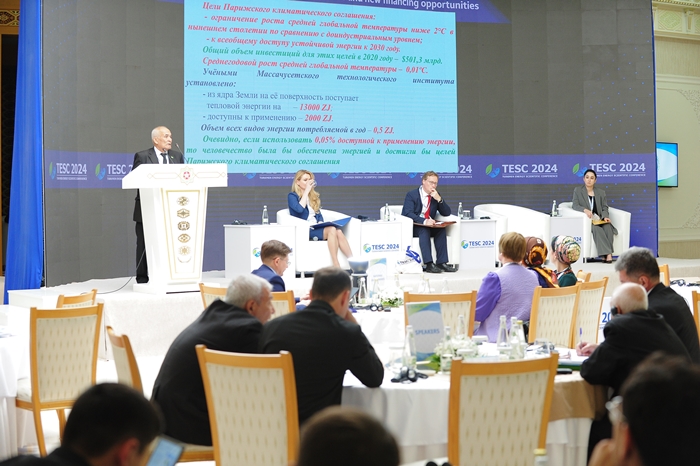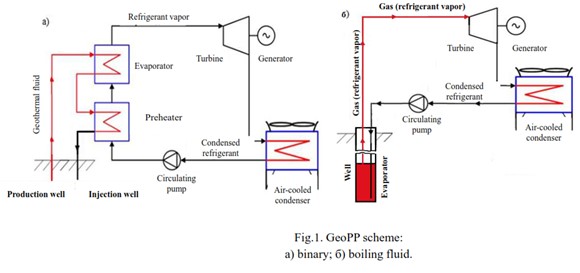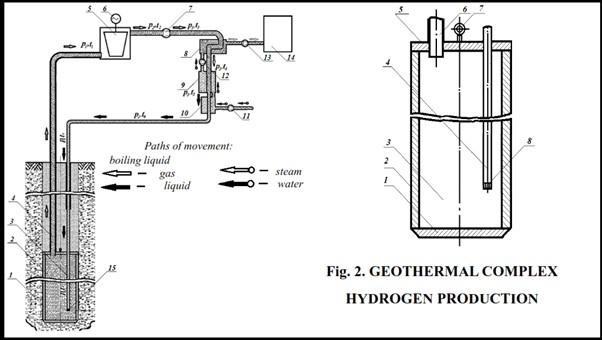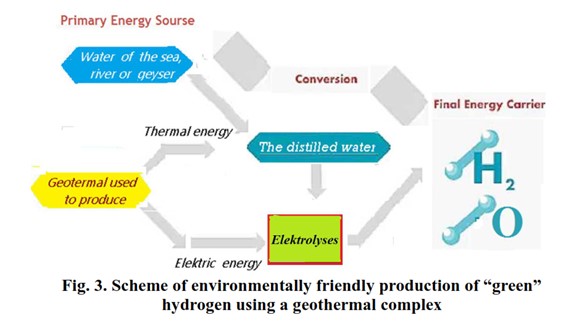 Geothermal energy is the heat within the earth. The word geothermal comes from the Greek words geo (earth) and therme (heat). Geothermal energy is a renewable energy source because heat is continuously produced inside the earth.
Geothermal energy is the heat within the earth. The word geothermal comes from the Greek words geo (earth) and therme (heat). Geothermal energy is a renewable energy source because heat is continuously produced inside the earth.
The earth’s surface absorbs about 50 percent of the sun’s energy into the ground. This, and the radioactive decay of minerals, produces geothermal energy. — The enormity of the geothermal energy is mind-boggling.
It’s clean, offering energy that can be extracted without burning fossil fuels such as coal, gas, or oil. Using geothermal for electricity produces only about one-sixth of the carbon dioxide of a natural gas power plant, and little—if any—nitrous oxide or sulfur dioxide.
At the recently-held Turkmen Energy Scientific Conference (TESC 2024), the Associate Professor at the Department of Technical Sciences, Military Institute of the Ministry of Defence of Turkmenistan, Rejepmyrat Ishankulyev gave a groundbreaking presentation, calling for the wider harnessing of the geothermal energy.
Citing the data from an MIT study, he said that annually 13000 ZJ of thermal energy is supplied from the Earth’s core to its surface, of which 2000 ZJ are available for use. The volume of all types of energy consumed by mankind per year is approximately 0.5 ZJ, which is only 0.025% of the available thermal energy of the Earth.
ZT is Zettajoule – [1 Zettajoule is equal to 1021 joules. 1 ZJ = 1 000 000 000 000 000 000 000 J]
Obviously, if this energy is harnessed, humanity will forever be supplied for 24 hours a day, 7 days a week with green electrical and thermal energy.
We are reproducing here some parts of the presentation of Professor Ishankulyev:
In geothermal energy production technologies, water vapor, vapor-water mixture or hot water in contact with the subsurface of the geothermal source as the heat transfer medium for extracting the Earth’s thermal energy. This creates a number of limitations in the development of most geothermal sources due to:
- the need for a thermal fluid with a temperature of at least 1820C in the direct method and at least 1070C in the binary method of electrical energy production;
- insufficient resource or flow rate of the thermal fluid;
- contamination of water vapor with carbon dioxide (CO2), sulfur sulphide (H2S), ammonia (NH3), methane (CH4) and other gases;
- contamination of the steam-water mixture with poisonous gases, table salt (NaCl), boron (B), arsenic (As), mercury (Hg) and other chemical elements and compounds;
- the high salinity of the hot water.
Research and development work on Enhanced Geothermal System (EGS) and deployment of Advanced Geothermal Systems (AGS) is underway to expand zones and increase geothermal energy production. These technologies utilize water vapor in contact with the subsurface of geothermal sources.
However, the above and other factors are the reasons for utilizing a minuscule fraction of the Earth’s thermal . According to the International Energy Agency, the share of geothermal energy in the World Energy Balance is currently 0.3%, and in 2030 will be only 0.5%.
To address the reasons for the development limitations of most geothermal sources, it is necessary to use a thermal fluid that is not in contact with the ground. This idea became the basis for the creation of the gas-based method of geothermal energy production, which uses the gas formed by the vaporization of boiling liquids to extract the Earth’s thermal energy.
On the basis of the gas method of geothermal energy production a number of inventions have been developed, which radically change the concepts of geothermal energy development and assessment of geothermal resource of territories.
These inventions have been published in the WIPO e-journal:
1. WO 20240047404 A2. Geothermal boiling fluid-fired thermal electrical power plant.
2. WO 20240047405 A2. Geothermal complex for distilled water production.
3. WO 20240047404 A2. A geothermal power plant operated by boiling fluid.
4. WO 20240052735 A2. Geothermal hydrogen production complex.
5. WO 20240052735 A2. Thermal pump installation with underground evaporator.
Fig.1а shows the operation scheme of the existing binary electrical power plant in a single-stage liquid-binary cycle, and Fig.1b shows the same scheme, after introducing the gas method of geothermal energy production into it. It is clearly seen that it allows to create a GeoPP of fundamentally new type in terms of principle of operation and design.
The innovation of inventions allows to:
– produce geothermal energy regardless of the resource, flow rate or composition of the water vapor, steam-water mixture or hot water in the geothermal source;
– produce environmentally friendly green hydrogen, electrical and thermal energy without causing damage to the environment and subsoil of the geothermal source;
– ensure the compactness of the geothermal plant;
– eliminate the need to drill exploratory wells;
– significantly improve their techno-economic, environmental and other indicators of geothermal energy production.
One of the most important problems of our time is to achieve a harmonious relationship between the development of mankind and the environment. So far, for various reasons, this is not the case, as evidenced by the various natural disasters occurring and expected in the world.
Currently, an environmentally friendly and efficient way to produce green hydrogen is high-temperature water vapor electrolysis. However, this method requires significant electrical and thermal energy compared to other methods. For example, high temperature electrolysis of water requires 39.4 MWh to produce 1.1 tons of hydrogen, while reforming methane requires 5.7 MWh.
So now only 2% of the world’s total hydrogen is produced by electrolysis of water, 75% of hydrogen is derived from natural gas and the rest from coal.
Let consider the possibility of simultaneously solving the problems of achieving zero carbon green hydrogen production and preventing the eruption of supervolcanoes using the geothermal hydrogen production complex proposed in the invention.
The most optimal territory for location of geothermal complexes for hydrogen production is the caldera of supervolcanoes, where magma with temperature up to 1300°C is located at a depth of 2.4 km. They are all located on the shores of seas and oceans or rivers flowing through their territory, which are natural sources of water necessary for hydrogen production.
In a hydrogen production geothermal complex, the liquid and the gas formed by evaporation of boiling liquid circulates through a closed loop “boiling liquid evaporator – turbine – compressor – water evaporator – water heater – water preheater – boiling fluid evaporator”
The complex is able to ensure hydrogen production is fully provided by electric and thermal energy generated by geothermal energy. The complex is also capable of effectively cooling the subsoil of volcanoes and calderas of supervolcanoes as a result of heat exchange of the formed low-temperature gas in the chamber of the vaporizer 2 and the highly heated ground encompassing the vaporizer 1.
* * *
These were the 10 leading geothermal countries in 2023:
United States – 3,900 MW.
Indonesia – 2,418 MW.
Philippines – 1,952 MW.
Turkey – 1,691 MW.
New Zealand – 1,042 MW.
Kenya – 985 MW.
Mexico – 976 MW.
Italy – 916 MW. /// nCa, 12 June 2024


